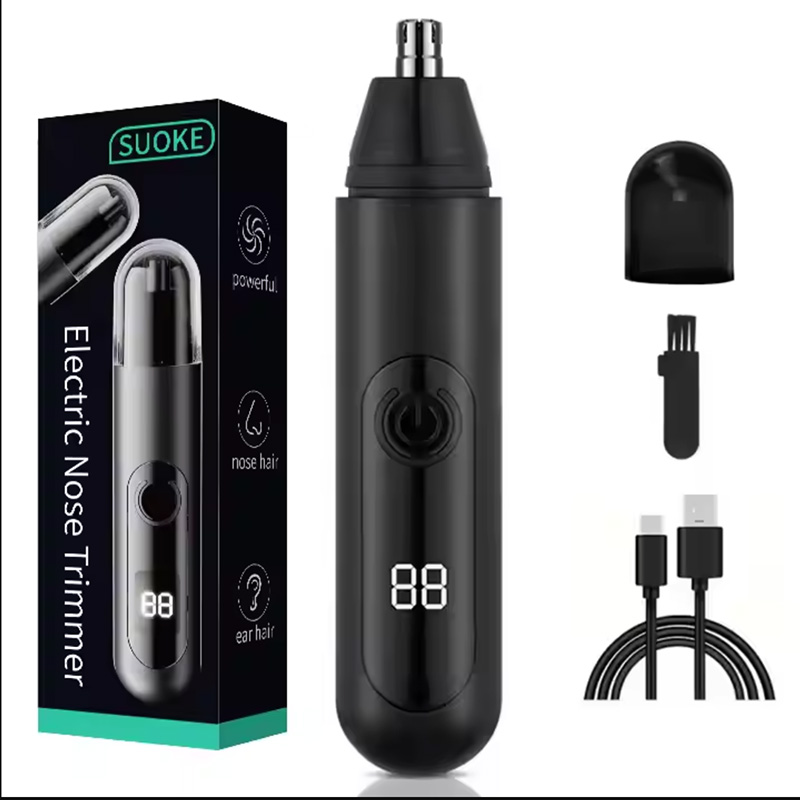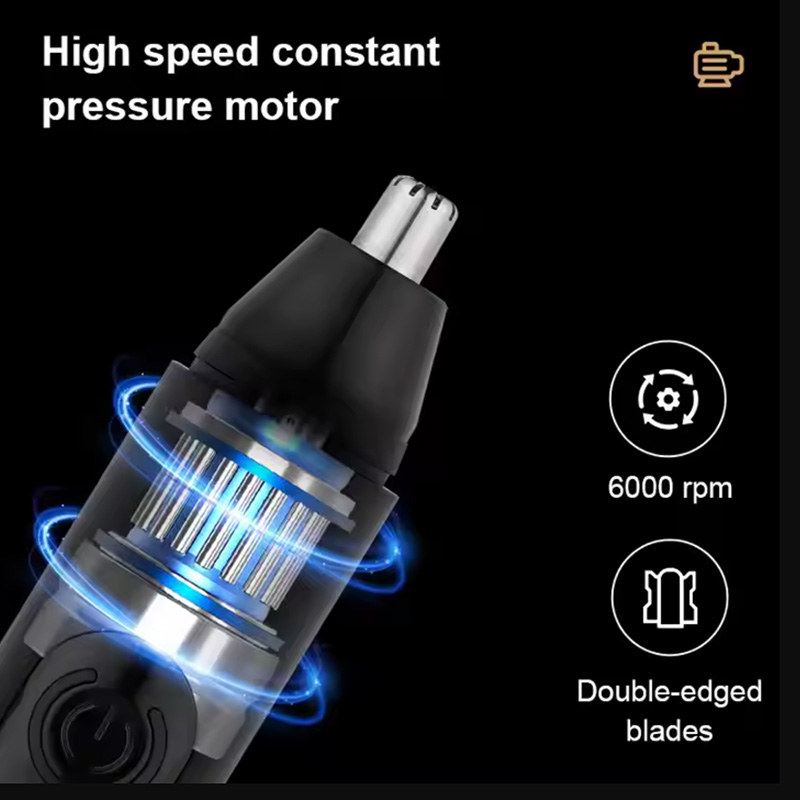
Grooming nose hair might not be glamorous, but let’s be honest—it’s something most folks deal with. Those annoying hairs sticking out can really mess with your confidence before big moments like job interviews or dates. Electric nose hair trimmers make things neat and tidy, but doing it wrong can cause redness, nicks, or painful tugging. If you’ve ever winced during trimming or ended up with a sore nostril, this guide is for you. We’ll share simple, real-world tips to trim safely and comfortably. You’ll get practical advice with some industry know-how to keep your routine smooth.
Nose hair isn’t just embarrassing—it actually does important work. It acts like nature’s air filter, catching dust and pollen before they hit your lungs. But when hairs get too long or wild, they can make you feel awkward. Trimming isn’t just about looks; it’s cleaner too. Too much hair traps dirt and bacteria, which isn’t great for your nose health.
Electric trimmers are the smart choice. They’re built to trim safely without hurting that delicate skin inside your nose. Forget tweezers (ouch!) or scissors (yikes!)—trimmers have guards that protect your skin while cutting hair. They’re also super quick, perfect for busy mornings. But you gotta use them right. Here’s how.
Not every trimmer works the same. Picking a good one makes all the difference for comfort and safety. Look for these things:
A comfy grip helps you handle it easily, especially in tight spots like nostrils. Sharp blades made of stainless steel or hypoallergenic materials stay smooth and irritate less. Waterproof features make cleaning simple, which keeps things hygienic. Think about power too—USB rechargeable or battery options are handy, especially when traveling. Some trimmers even include extra heads for eyebrows or ears, giving you more value.
For instance, a USB rechargeable trimmer saves the day when you’re on the move. Plug it into your laptop or a power bank anywhere. I once forgot to charge mine before a trip and used a hotel USB port—total lifesaver!
Follow these steps to trim like a pro, without pain or redness:
Clean your face first to remove oil and dirt. Gently blow your nose with a tissue. If hairs feel stiff, try a saline spray to soften them up. Think of it like prepping a canvas—it sets you up for better results.
Make sure your trimmer’s ready. If it’s rechargeable, check the battery. For battery models, use fresh ones so it doesn’t quit halfway. Peek at the blades too—clear any old hair or gunk.
Good light and a mirror are must-haves. Try your bathroom or a spot with natural light. Trimming in dim rooms is risky—I learned this the hard way in a shady hotel and missed half the hairs.
Here’s the key part:
Turn off the trimmer and clean it right away. Rinse waterproof blades under water. Otherwise, use the little brush to sweep out hairs. Dry it well before storing somewhere cool. A clean trimmer stays hygienic and lasts way longer.
Safety is huge when you’re working near sensitive skin. Stick to these golden rules:
Don’t push too deep—just trim visible hairs to avoid nicks. Never pluck nose hair either; it can cause infections or ingrown hairs. Trimmers are gentler. Trim every week or two to keep hairs manageable—it’s quicker and less irritating. Don’t share your trimmer; it spreads germs. And stop if anything hurts—check for dull blades or bad technique.
Fun story: I lent mine to a buddy once (before COVID!), and he swore it felt dull after. Lesson? Keep your trimmer personal.
Rechargeable trimmers really stand out. They save money since you skip buying batteries. They’re kinder to the planet with less waste. USB charging is crazy convenient for travel—use any phone charger. Many also handle ears or eyebrows, making them super versatile.
Studies show most people prefer rechargeable gadgets now for ease and eco-friendliness. Who doesn’t love something that charges like your phone?
Even pros slip up sometimes. Dodge these errors:
Dull blades pull hairs and hurt—replace or sharpen them yearly. Don’t trim when stuffed up; wait until you breathe clear. Skipping cleaning dulls blades and breeds bacteria—do it every time. And don’t over-trim! Leave some hair for filtering. I got too eager once and felt weirdly exposed to dust for days. Big mistake.
Take care of your trimmer so it stays sharp and safe:
Quick tip: Check the manual for special care steps. Some models need specific oil.

For reliable grooming tools, SUOKE Electric is a top name in personal care. Based in Zhejiang, China, they specialize in quality nose hair trimmers, shavers, and clippers. Their gear, like the portable KHL-FHB01 model, features tough stainless blades, comfy grips, and easy cleaning—perfect for safe trimming. They focus on OEM/ODM work, teaming up with global brands to make custom products that meet strict standards like CE and ROHS. Whether you’re buying for yourself or your business, SUOKE Electric mixes smart tech with user-friendly design to upgrade your grooming.
Trimming nose hair doesn’t need to be scary. With a solid electric trimmer and the right moves, you can look tidy without irritation or cuts. Pick a good tool, prep well, and follow safety tips to make grooming easy. Regular care and avoiding slip-ups keep your trimmer running smoothly. Ready for an upgrade? Check out SUOKE Electric’s trimmers for a reliable, no-fuss solution that fits your life.
Trim every week or two, depending on hair growth. Regular trims keep hairs easy to manage, so there’s less tugging or soreness. Cutting too much stresses skin, so just tidy visible hairs.
Sure, but be extra careful. Clean non-waterproof trimmers with their brush to stop gunk buildup. Dry blades completely to prevent rust.
Stop trimming right away. Rinse with saline solution to calm things down. Check if blades are dull or your technique’s off. Skip trimming for a few days. If it stays bad, see a skin doctor.
If trimming feels rough or pulls hairs, blades are likely dull. Most last about 6–12 months with normal use. Swap them out to keep things comfy and safe.
Lots of trimmers, including SUOKE Electric’s, come with special heads for ears or brows. Check your model’s guide first. Use the right attachment and go gently to avoid trouble.